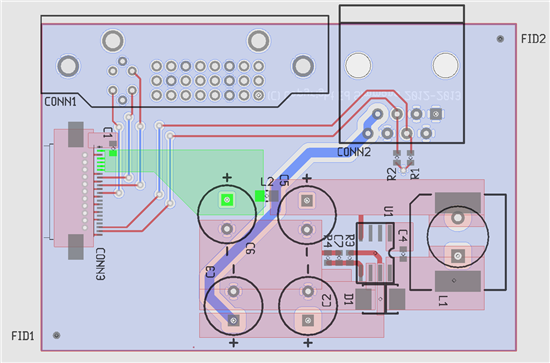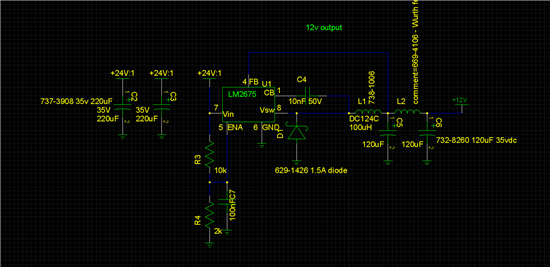Hi Ti,
Please could you help me get to the bootom of this mystery?
I've made a small number of specialist boards that carry an LM2765 12v fixed output switching regulator. We have followed the datasheet and used the recommended layout for the regulator on the PCB.
We've verified all the parts are correct values etc but the LM2765 goes into thermal shutdown very soon after applying power.
Our design is 24v Vin, 12v out, 100uH inductor (we have tried swapping different inductors of the same value but different constructions with wildly differeing results) and a load current of ave 300mA & peak of 450mA.
Please can someone offer me some advice on fixing this issue?
Thanks & best regards.
Ed



